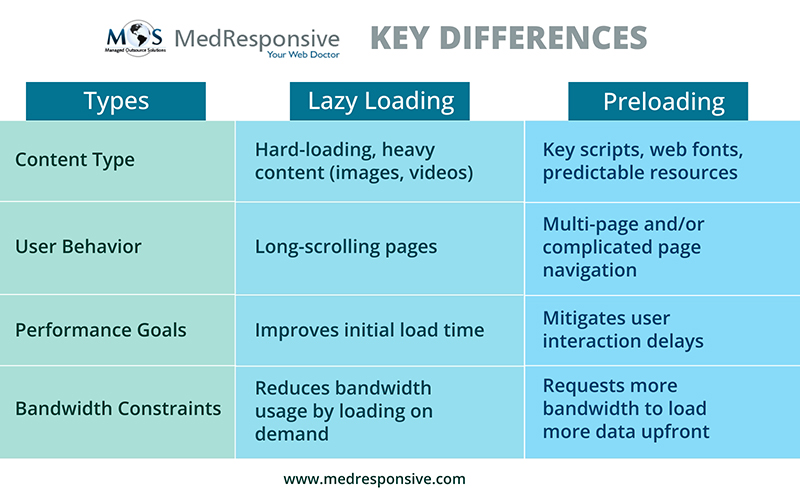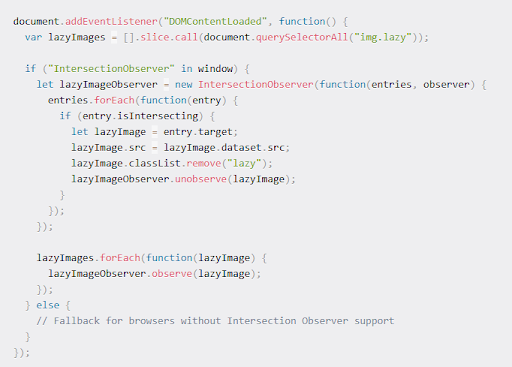Have you ever visited a website and wondered how, in some of them, the page loads instantly and in some, you are stuck watching certain page elements (fonts and especially images) load sluggishly, one by one, making you feel like you’re wading through molasses on a cold day? (I’ll admit-I even blamed my wi-fi for it!)
They are not caused by your internet connection but by nifty techniques used to improve your website’s performance.
Did You Know?
53% of mobile users abandon a website if it takes more than 3 seconds to load!
A few seconds-that is literally the difference between a loyal visitor and a lost opportunity. Lazy loading and preloading can help foster a faster, smoother web experience, if implemented correctly.
What Is Lazy Loading?
Load What You Need, When You Need It
Lazy loading is the method of delaying non-critical elements or resources (images, videos or scripts) until they are absolutely needed. For instance, if there’s a heavy image on the webpage that the user needs to view, a placeholder will be displayed at first, and then, the complete image will be lazyloaded—when he/she scrolls down and reaches the image location.
Pros
- Faster Page Load: By loading only what’s necessary, the initial page load becomes faster. A 2023 WP-Rocket case study found that lazy loading reduced the load time by at least 30% for websites with heavy elements/resources.
- Reduced Bandwidth Usage: This is because website visitors only download what they interact with, thereby reducing data consumption (great for those running on limited data plans).
- SEO Benefits: Core Web Vitals (CWV) metrics like Largest Contentful Paint (LCP) will show significant improvement that can boost the website’s overall SEO ranking.
Cons
- SEO Drawbacks: If not implemented correctly, the supposed benefits will backfire, as search engines may miss lazy-loaded content, hurting website’s discoverability.
- User Experience Issues: Impulsive content loading can result in abrupt layout shifts, which can irritate visitors and lead to them leaving the website.
When to Implement Lazy Loading
Lazy loading works for resource-heavy websites like portfolio (photos/videos loaded), news and media-blogging websites.
What Is Preloading?
A Step Ahead, Before You Know You Need It
Preloading is about anticipating what a user might need next and fetching those resources. This will make the overall web experience snappier, especially with multi-page websites. For instance, resources for a page will be loading in the background while the visitor is interacting with the current page.
Pros
- Faster Page Navigation: With page resources preloaded and ready on demand, users will experience a smoother transition, page-to-page.
- Lowered Interaction Delays: Preloading makes sure that all necessary scripts and resources are loaded, especially for Single Page Applications (SPAs) and e-commerce sites, thereby enhancing responsiveness.
- Better Multi-page Experience: Predictive preloading can ease complicated, multi-step processes like checkout flows, a best option for online stores handling transactions.
Cons
- Escalated Bandwidth Usage: With preloading activating unused resources in the background can waste data, especially for mobile users.
- Overloading: This requires expertise in identifying what needs to be loaded, without which it can overload servers and subsequently, user devices.
When to Implement Preloading
If your website has a more predictable user navigation experience— user dashboards or product category pages—preloading would be the ideal choice.
What Are the Best Practices for Implementation?
Lazy Loading
- Use Placeholders: Prevent page layout shifting by using low-resolution images or placeholders at the image location.
- Enhance with Intersection Observer API: For efficient lazy loading, use this API as it is supported widely across all major, modern browsers.
- Proper Rendering: To ensure proper indexing of lazy-loaded content by search engines, use prerendering or server side rendering (SSR).
Preloading
- Priority for Critical Resources: Always ensure the key resources/elements are set to be loaded at first. Use tags for fonts, scripts, and next-page assets.
- Avoid Overloading: Make sure to focus only on resources that need to be displayed during the next user interaction.
- Use Predictive Loading: Understand user behavior to determine what resources to be loaded next.
Pro Tip: Combine Them!
Why choose one when you can have the best of both worlds?
There are some websites for which the solution isn’t either one of them but combining both. Use lazy loading for less-crucial resources like footer images or sidebar videos and preload critical resources like landing page images and texts. This can optimize both user experience and website performance.
Why Partner with MedResponsive?
All of this definitely can be overwhelming for a layman, but that is where professional, website development services can prove useful. We specialize in curating strategies that fit your needs-regardless of whether it’s lazy loading or preloading. And the final result? A thoroughly optimized website that keeps your users engaged, boosts conversions and improves ranking in search engines!







